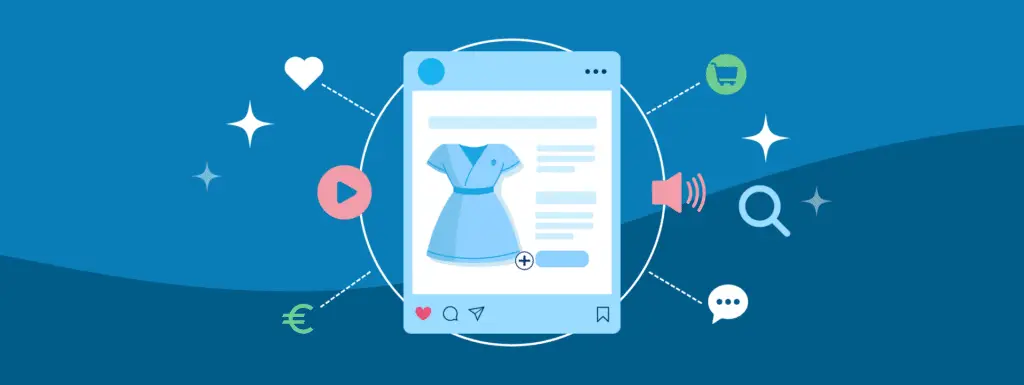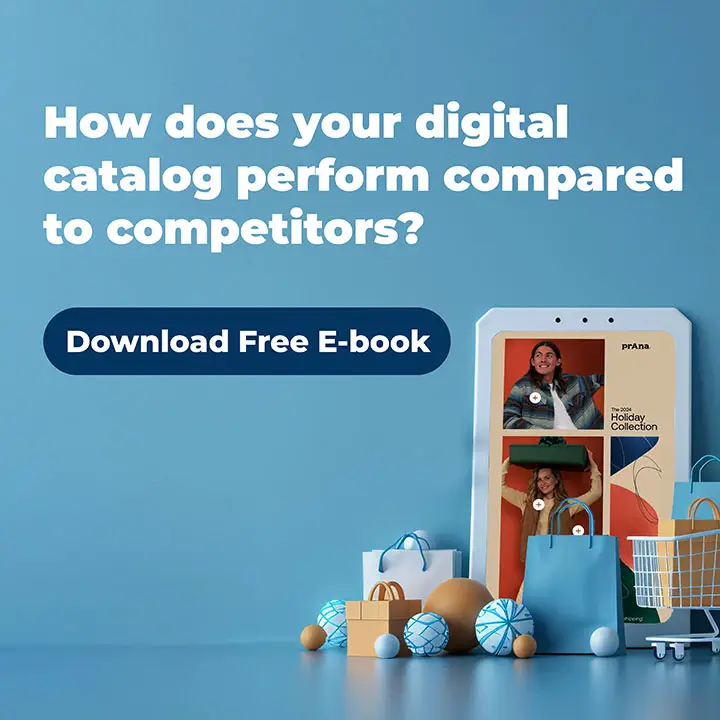A customer’s path to purchase is never linear. Customers will visit and revisit sites, compare products and prices, change their minds, and even forget about making a purchase entirely before swiping their credit cards or adding an item to their carts.
Retailers must make every interaction count to shorten the customer path to purchase and capture their business. That is why, according to Hootsuite, 40% of marketers are now using shoppable media to block out distractions, gain useful customer insight, and remove obstacles during buyer journeys.
Shoppable media can boost conversion rates by 30% because this valuable marketing tool makes it easier for consumers to purchase products by giving them a conversion action while they are engaged with experiencing the product. They can simply click on their desired product and go directly to the checkout page.
Let’s look at how shoppable media is already transforming the retail industry.
Shoppable Media Definition: What Is Shoppable Media?
Shoppable media or shoppable content refers to any marketing content that includes a direct opportunity to make a product purchase. In some instances, shoppers can add items directly from a digital catalog or online flyers to their cart; in others, they are directed to a streamlined product page.
Think of digital catalogs as an extension of your store. Shoppable digital catalogs present products in an engaging, interactive way that paints a picture of what life could be like if the customer bought the product. It provides practical, relatable information like recipes and how-to guides that build connections and inspire customers to buy.
Shoppable media allows customers to take immediate action and purchase without hunting in stores or online for the product they’ve just seen (and want). This type of content has the added benefit of being far more persuasive than non-interactive media.
Retailers can add videos, audio, information sheets, recipes, and tips to their products to engage and enrich the entire shopping experience throughout the buyer journey.

What’s the difference between social commerce and shoppable media?
Social commerce and shoppable content are two closely related concepts, but there are some important differences between them.
Social commerce is a broad term for buying and selling products and services through social media platforms. This can include anything from product reviews and recommendations to live shopping events.
Shoppable content is a specific type of social commerce content that allows users to purchase products directly from the content itself, like an embedded Add to Cart button in a product catalog.
Benefits of Shoppable Media
If you are looking for a way to increase sales, improve customer engagement, and build brand awareness, you should consider using shoppable media. Here are just a few of the benefits:
Immediacy
Think of the last product you bought because you saw it in a magazine or on social media. You want the product because you love how it’s presented, so you search for it online. You might end up on a retailer’s page if you remember the details. There, you’ll click around and hopefully find it before adding it to your cart and paying for it.
That’s the ideal scenario. And it leaves ample opportunity for customers to either forget they ever saw the product, forget that they wanted the product (or why they wanted it), or convert to a competitor.
When you use shoppable media, customers can convert directly from the image or video by clicking an Add to Cart button when they see something they want.
Inspiration
Too many choices can become paralyzing for many customers. Department stores, outdoor media, online advertising, and social media bombard them with options, and it can be difficult to decide whether or not a product fits into your lifestyle.
Digital shoppable media captures a customer’s attention by presenting products in a relatable or inspirational way. Adding recipes, style guides, promotional videos, audio, and how-to tips make it easier for viewers to picture the product as part of their daily routines – and make it easy to add it to their cart.
Reach customers when they are most receptive
As a marketer, you’re always trying to answer questions about customers.
- When is the best time to speak to a customer about a new product?
- Where is the best place to reach them?
- Driving to work in the morning while listening to a popular radio show?
- Browsing the news on their phone or waiting for the bus at a bus stop?
- Or while they are actively looking through a product catalog to see if anything matches their needs?
Online catalogs, videos, and other shoppable media can inspire customers to purchase in the moment, even when they aren’t expecting to. They discover something new they love and can purchase at that exact moment. They don’t need to wait until they get home or reach a store. It’s the perfect time to buy.
Shoppable Media Best Practices For Every Step of The Customer Journey
Shoppable media is the way to go if you want to convert and engage more customers, but there are a few best practices to remember.
Ensure you understand the path to purchase for your customers and present them with multiple opportunities to engage with your brand and products.
Awareness stage
During the awareness stage, potential buyers are looking for more information and exploring options. Presenting visually appealing catalogs or videos with interactive elements can pique interest and generate curiosity. Users can browse through the catalog or watch the video, click on product tags or hotspots for more information (like product specs, sizing guides, and data sheets), and begin their journey of discovery.
Interest stage
As buyers progress to the interest stage, they become more engaged and evaluate specific products. Shoppable media can play a significant role in this phase by providing comprehensive product information, images, videos, and customer reviews. Interactive elements within the catalogs, such as zoom features or 360-degree views, enable potential buyers to examine products and gain confidence in their potential purchase closely.
Because online product media provide rich customer data, retailers can incorporate personalized recommendations and product suggestions based on the buyer’s interests or browsing behavior.
Evaluation stage
In the evaluation stage, buyers actively compare options and consider the best fit for their needs. Shoppable media facilitates this process by allowing users to compare different products side by side within the media interface. This comparative view can highlight key features, specifications, pricing, and availability, making it easier for buyers to make informed decisions. Retailers can incorporate social proof elements like user-generated content or ratings within the catalog, video, or brochure to enhance credibility and trust.
Decision stage
At the decision stage, buyers have narrowed their options and are ready to purchase. Shoppable media can provide a seamless transition from evaluation to conversion. By incorporating “Buy Now” buttons or links, users can add items to their shopping carts or checkout without leaving the viewing experience. This streamlines the buying process, reduces friction, and encourages immediate conversions.
Post-Purchase stage
Shoppable media can also be utilized in the post-purchase stage to enhance customer satisfaction and foster repeat business. Retailers can include personalized recommendations for complementary or related products, encouraging customers to explore additional offerings. Catalogs, brochures, and videos can serve as reference points for customers to revisit their purchased products, access user manuals or support documentation, or even share their positive experiences with others.
Shoppable Media Examples
The possibilities are endless when it comes to shoppable media, and there are a few brands that get it right:
Spott videos
Spott created this Sony video at a request from a digital marketing agency.
(function(s,p,o,t,T){ T=p.getElementsByTagName(‘head’)[0]; t=p.createElement(‘script’);t.async=1;t.src=o; T.appendChild(t); })(window,document,’https://static.spott.ai/videoplayer/js/embed.js’);Spott created this video for their marketing purposes.
The interactive videos are a great way to engage your shoppers. The interactive layers added to the video allow your visitors to act seamlessly when inspired by your content, maximizing the ROI. Video, audio, and music combine in a powerful way, while clickable buttons allow customers to add the product to their cart immediately. Talk about striking while the iron (or the beat) is hot!
Launch Your Shoppable Content Strategy Today With Publitas
Thanks to Publitas and Spott.ai, anyone can create beautiful, immersive shoppable content with just a few clicks. Shoppable content boosts sales by guiding customers towards a purchase at every step of their journey, from awareness to the post-purchase stage.


